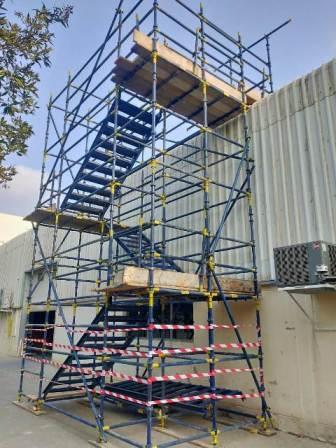Oct . 18, 2024 10:10 Back to list
Reinforced Concrete Formwork Manufacturing Facilities and Their Importance in Construction Industry
The Evolution and Importance of Reinforced Concrete Formwork Factories
Reinforced concrete formwork is essential in modern construction, serving as the backbone for a wide variety of structures, from residential buildings to skyscrapers and bridges. As urbanization continues to accelerate globally, the demand for efficient, durable, and cost-effective construction methods has led to the significant growth of reinforced concrete formwork factories. This article explores the evolution, processes, and importance of these factories in the construction industry.
The Evolution of Formwork
Historically, formwork systems were rudimentary, utilizing materials like wood or masonry. These traditional methods, while functional, posed several challenges, such as high labor costs and inefficiencies. The introduction of reinforced concrete revolutionized the construction landscape, providing greater structural integrity and longevity. As the industry evolved, so did the formwork systems, incorporating metal and plastic materials that offered improved durability and reusability.
The emergence of specialized factories dedicated to producing formwork systems has been a game changer. These factories employ advanced technology and manufacturing processes to create formwork that meets precise specifications, resulting in faster construction times and enhanced safety standards. With the advent of Computer Numerical Control (CNC) machines and automated assembly lines, reinforced concrete formwork production has become more efficient, minimizing human error and maximizing output.
The Manufacturing Process
Reinforced concrete formwork factories typically employ a systematic manufacturing process that includes design, material selection, fabrication, and quality control. The design phase involves engineers and architects collaborating to create custom formwork solutions tailored to specific project requirements. This phase is crucial, as it sets the foundation for the entire construction approach.
Next, material selection is paramount. Factories often use high-quality steel, aluminum, and engineered plastics to create formwork that can withstand the considerable pressures of wet concrete. Once the materials are selected, the fabrication process begins, utilizing state-of-the-art machinery for cutting, shaping, and assembling the formwork components.
Quality control measures are integral to the production process. Each component is subjected to rigorous testing to ensure it meets industry standards, including load-bearing capacities and durability. With effective quality control, manufacturers can guarantee that the formwork will perform as expected during construction, reducing the risk of delays or costly repairs.
reinforced concrete formwork factories

Advantages of Reinforced Concrete Formwork
The advantages of utilizing reinforced concrete formwork from specialized factories are manifold. Firstly, these systems are designed for reusability, allowing contractors to use the same molds across multiple projects. This not only reduces material costs but also minimizes waste, adhering to sustainable construction practices.
Secondly, the accuracy of factory-produced formwork significantly enhances the overall quality of construction. Precision-engineered forms lead to smoother finishes and reduce the likelihood of imperfections, which is critical for aesthetic aspects and structural performance.
Thirdly, the use of advanced formwork systems can accelerate the construction timeline. Prefabricated solutions, including modular and panelized systems, enable faster assembly on-site, leading to quicker project completion without compromising safety or quality.
The Future of Formwork Factories
Looking ahead, the evolution of reinforced concrete formwork factories is poised to continue with increasing emphasis on sustainability and innovation. As the construction industry faces growing pressure to reduce its carbon footprint, manufacturers are exploring eco-friendly materials and processes for formwork production.
Additionally, with the rise of technology such as Building Information Modeling (BIM) and the Internet of Things (IoT), formwork factories can provide more integrated solutions for construction projects, allowing for enhanced planning and execution.
Conclusion
Reinforced concrete formwork factories play a pivotal role in the modern construction landscape. By focusing on efficiency, quality, and sustainability, these factories are essential for meeting the growing demands of the built environment. As technology continues to advance, the industry can expect even more innovative solutions that will drive the future of construction, making reinforced concrete formwork an enduring and vital component of infrastructure development.
-
High-Quality U Head Jack Scaffolding – Reliable Scaffolding Jack Head Manufacturer & Factory
NewsJul.08,2025
-
High-Quality I Beam H20 Leading Timber Beam H20 Material Factory, Exporters & Manufacturers
NewsJul.08,2025
-
High-Quality Powder Coating Steel Formwork - Durable & Corrosion Resistant Solutions
NewsJul.07,2025
-
Inclined Column Formwork Supplier – Durable & Precise Solutions for Unique Structures
NewsJul.07,2025
-
High-Quality Water Stop Solutions Trusted Water Stop Company & Suppliers
NewsJul.07,2025
-
High-Quality Formwork Material Supplier Reliable Manufacturer & Factory Solutions
NewsJul.06,2025